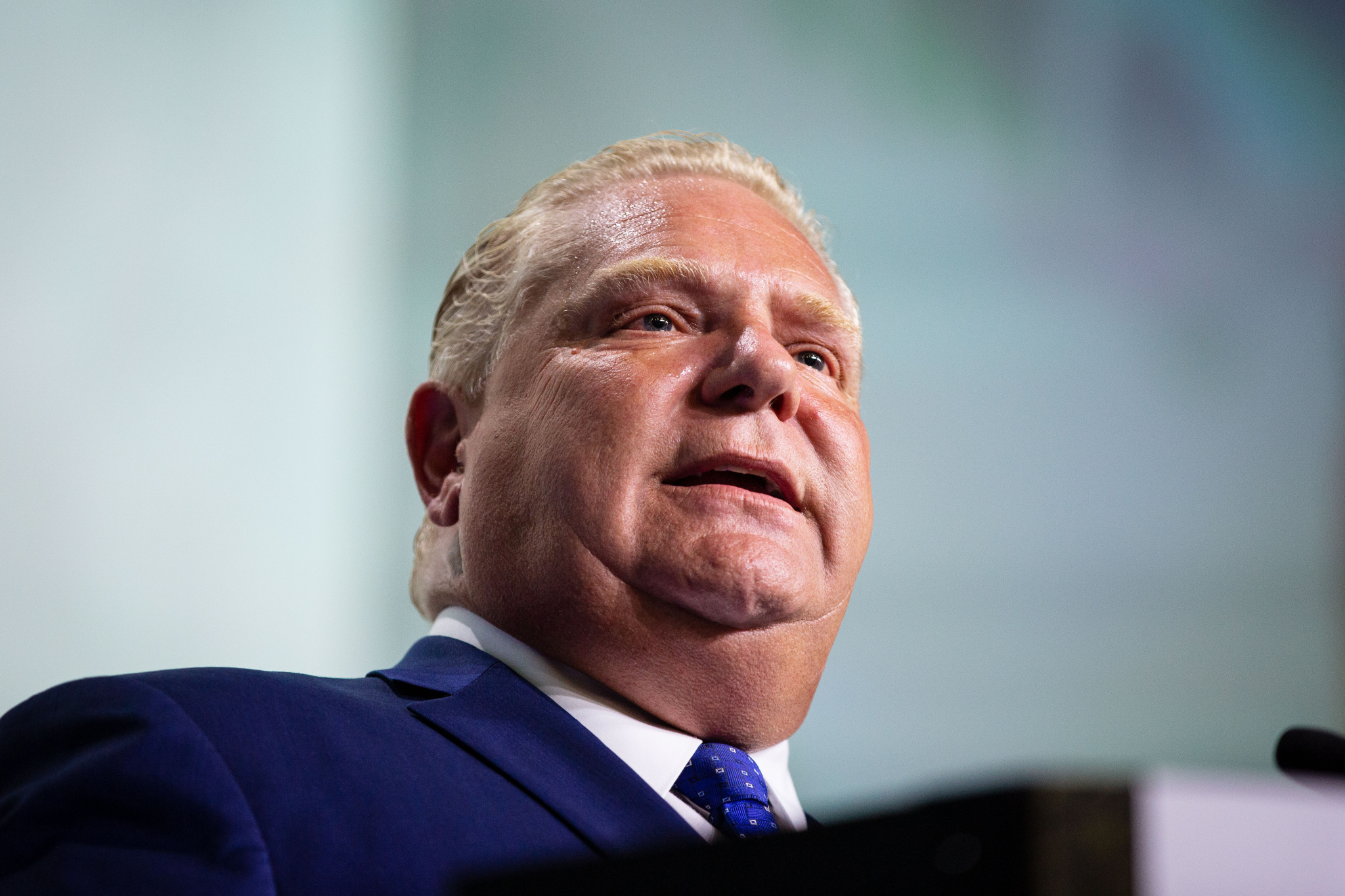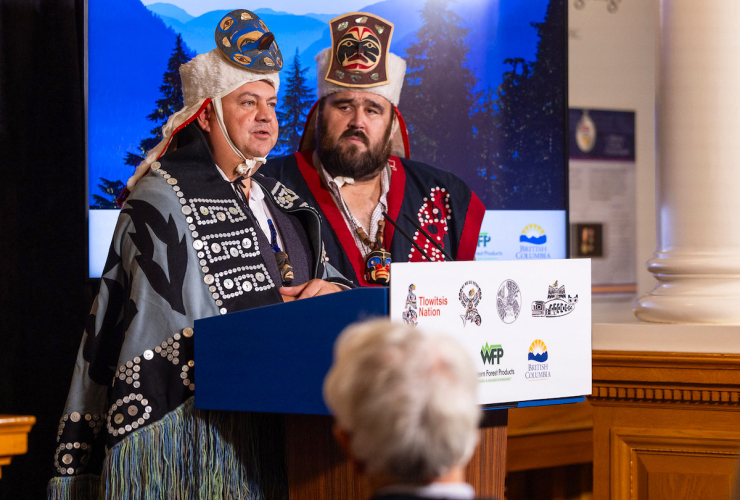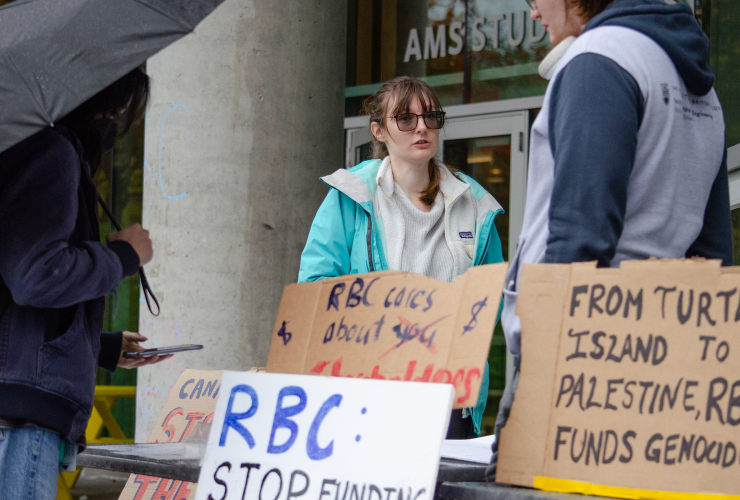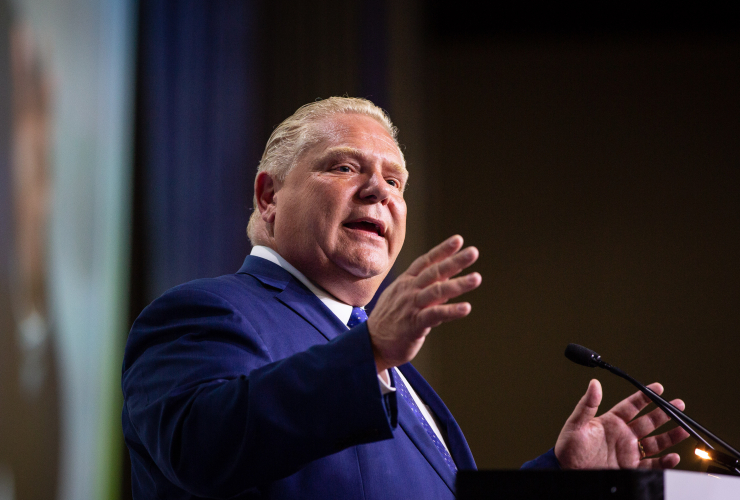Support journalism that lights the way through the climate crisis
The Ford government’s decision to reverse controversial urban boundary expansions will make it easier for municipalities to deliver low-cost family housing in existing neighbourhoods and address Ontario’s housing shortage without sacrificing the environment.
So say environmental advocates and local municipalities who applauded the reversal announced earlier this week.
“This is a really big deal for Hamilton and for municipalities,” said Andrea Horwath, mayor of Hamilton, a city that opposed the provincial government’s attempt to impose sprawl in her community. “We had been clear with the province that our city did not need to expand into agricultural lands to achieve our housing targets. In Hamilton especially, our agricultural sector and natural assets are hugely important and need to be protected and supported.”
In November 2022, Doug Ford's government ordered the expansion of municipal boundaries for housing development in several cities, including Hamilton.
With that distraction now out of the way, Horwath told Canada’s National Observer that the city can now focus on meeting its housing targets.
“At the request of the province, Hamilton has committed to very clear targets for new affordable housing and we’ve always been clear that we can reach those targets within our original urban boundary,” said Horwath.
The city is able to increase its density rather than produce more urban sprawl, she added.
Advocates argue that constructing housing developments within a city's current urban boundary helps prevent potential sprawl, which, in turn, lowers transportation emissions and contributes to the preservation of the natural environment.
On Wednesday, Hamilton city councillors approved a motion requesting RCMP to include the municipal boundary expansion order in its Greenbelt probe.
Earlier this month, the RCMP's sensitive crimes unit officially launched a criminal investigation into the Ford government’s $8.3-billion Greenbelt land swap.
The Ford government this week announced its intention to reverse the controversial urban boundary expansions in several municipalities across the province, including Barrie, Belleville, Guelph, Hamilton, Ottawa, Peterborough, and the regional municipalities of Halton, Niagara, Peel, Waterloo, York, and Wellington County.
Municipal Affairs and Housing Minister Paul Calandra said legislation will soon be introduced to undo the official plan decisions for those municipalities, with exceptions only in cases where construction has already begun or where doing so would violate existing provincial legislation and regulations.
Municipalities will have a 45-day window to submit changes and updates to those plans to the ministry staff, and the province will cover the costs incurred by municipalities for work related to the boundary expansions.
In Hamilton, approximately 5,000 acres of land were affected by Bill 23, the More Homes Built Faster Act, said Ted McMeekin, councillor for Flamborough Waterdown Ward 15. With the Ford government's announcement, McMeekin hopes all land will be restored and the city will decide where to build affordable housing.
“The impacts of expanding urban boundaries on the environment would be dramatic,” said McMeekin. “Hamilton wants to build housing units in our own backyards and NOT on prime agricultural, wetland and Greenbelt lands. The province should be re-embracing inclusive zoning and much higher densities along transit corridors and cheering on the prudent existing city strategies.”
Inclusionary zoning (IZ) is a policy that mandates a specific percentage of affordable housing units within new residential developments located in areas such as Protected Major Transit Station Areas (PMTSAs), according to the City of Hamilton website.
This tool is designed to enhance the long-term supply of affordable housing in the city.
The city's official plans are like snapshots of the community's DNA, capturing its hopes, dreams and wishes, said McMeekin.
“Historically, local governments have always been closer to the people, particularly regarding planning issues. The target for Hamilton is to have 55,000 homes, and so far, about 40,000 units have been approved,” he added.
In a statement sent to Canada's National Observer, Oakville Mayor Rob Burton welcomed the reversal, saying for many years, town council has opposed expanding into prime agricultural land, preferring to add density within urban areas available and designated for urban development.
“Throughout the Halton Official Plan update process over the last two years, town council and I unanimously advocated to restrict growth to existing development areas of Halton," said Burton. “We decided we need to grow up, not out, to save green space and farmland and reduce the impact of growth on the climate change emergency.”
Alex Szaflarska, a member of the Hold The Line non-profit environmental advocacy community organization, said urban sprawl “contradicts our strongly supported Regional Official Plan to promote complete, walkable, transit-supported neighbourhoods within existing urban boundaries.
“We needed better solutions to our affordable housing and environmental crises than overriding our local sustainable planning to enable the construction of inefficient and expensive houses on irreplaceable farmland, the Greenbelt and other natural spaces," she said. "This urban sprawl housing is not affordable for most people, nor is it accessible by public transit.”
A statement sent to Canada's National Observer from Environmental Defence referred to the Ford government's decision as another modest step towards ending Ontario’s sprawl and land speculation scandal.
“The Ontario government’s two recent reversals — cancelling Greenbelt removals and now reversing forced boundary expansions — are only the first two steps on a long road," said Phil Pothen, Ontario’s program manager at Environmental Defence. “These two steps simply reverse actions taken as a part of a much larger corrupt and counterproductive push for sprawl that would worsen Ontario’s housing shortage.”
Environmental Defence is concerned that Calandra seems to be framing the forced boundary expansion issue as one of "process."
The heart of the problem lies in the government's insistence on extending settlement boundaries in areas where expansion was unnecessary and counterproductive to increasing housing production, said Pothen.
There was already a significant amount of farmland and wildlife habitat designated for development within settlement boundaries before 2022, making further sprawl development inefficient and car-dependent, he added.
This story was produced in partnership with Journalists for Human Rights for the Afghan Journalists-in-Residence program funded by the Meta Journalism Project.
This is good quality 21st
This is good quality 21st Century urban planning at work. Rejecting the discredited and very damaging models of last century is ithe first step.
This is a wonderful opportunity for the feds to step up and offer support in areas like bringing transit to European levels, building up an affordable rental housing stock, and seriously beefing up rebates on clean power refit and new projects
Are the federal Liberals and NDP even paying attention?
Don't Trust Doug Ford, He
Don't Trust Doug Ford, He needs to be fired cause he doesn't care about the People of Ontario, he wants to adapt his Carbon Tax of the Liberals.







Comments